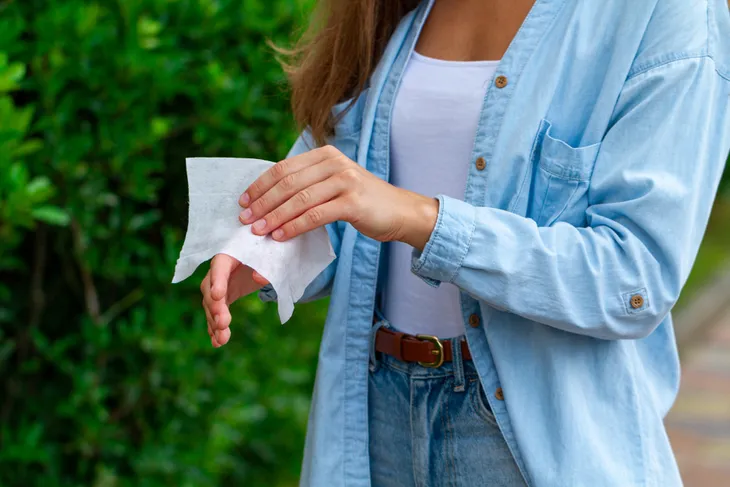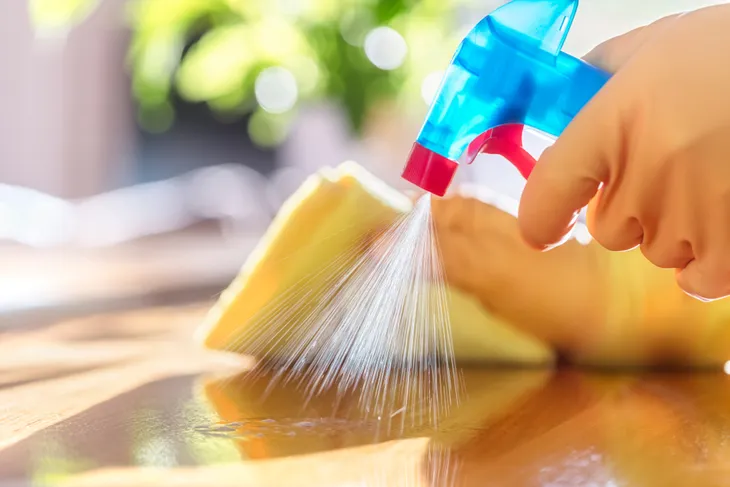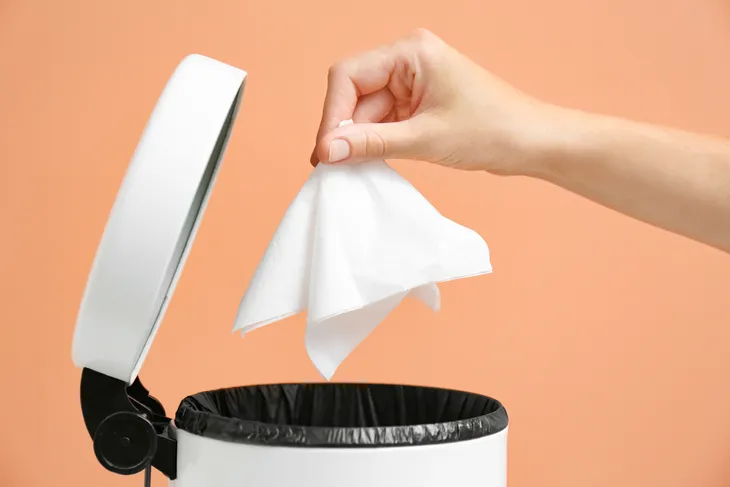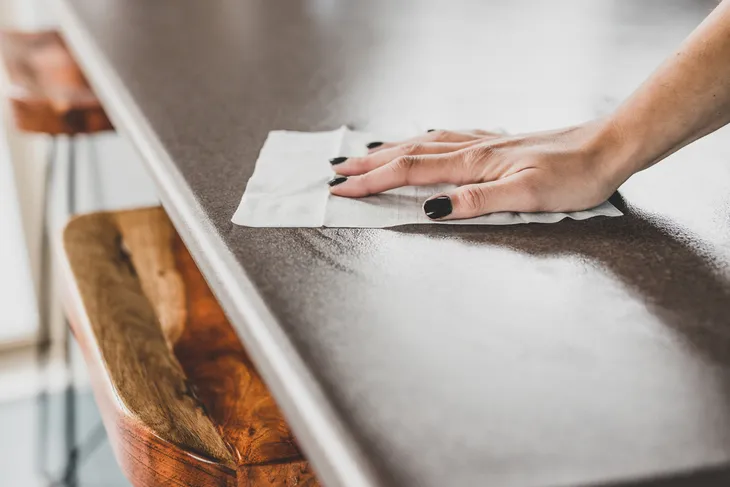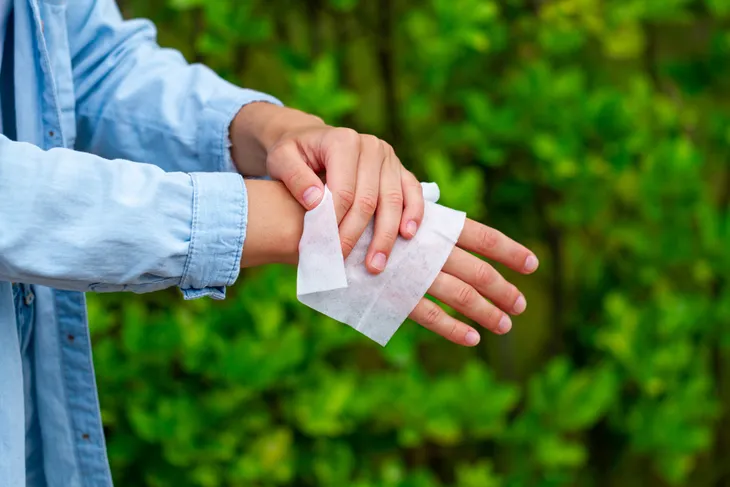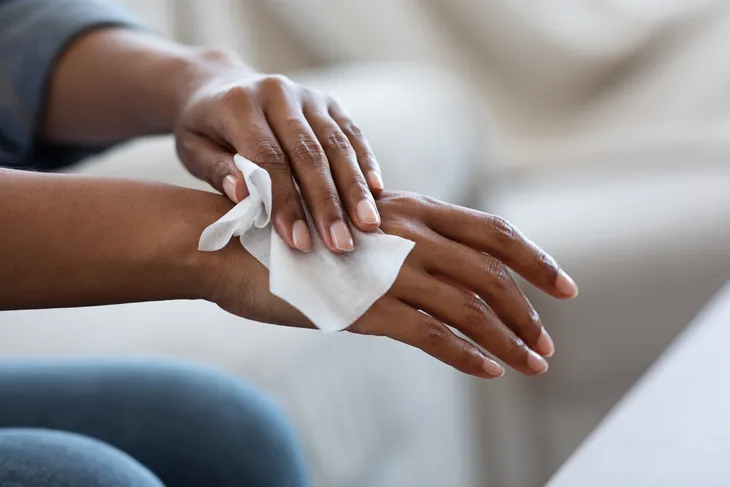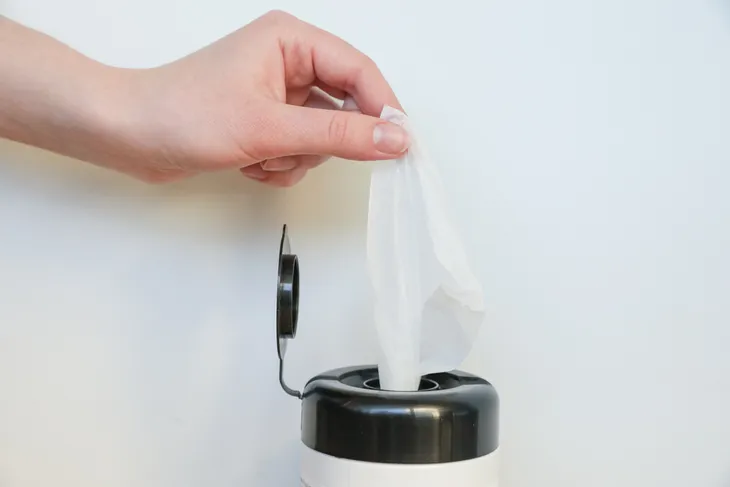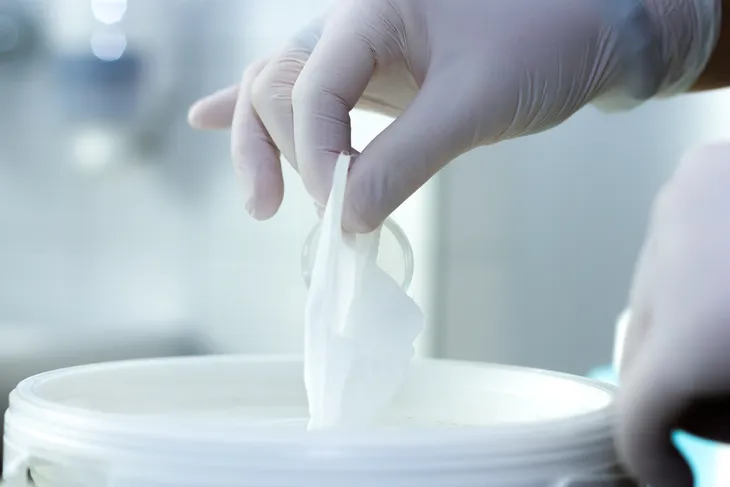A quick and effective way to keep your home clean and free of harmful germs is to use disinfecting and sanitizing wipes. These wipes are soaked in solutions that destroy almost any type of germ (including viruses). Many stores can’t keep disinfecting and sanitizing wipes in stock lately. Thankfully, they’re so easy to make at home. Better yet, making them at home might save you money too.
In this article, we explore the difference between disinfecting wipes and sanitizing wipes and how to properly use them. We’ll also provide easy steps to make your own disinfecting wipes and sanitizing wipes at home so you can start destroying germs with ease!
What Is the Difference Between Disinfecting Wipes and Antibacterial Wipes?
It’s important to point out, not all wipes are created equal. In general, disinfecting wipes are meant for hard surfaces whereas antibacterial (or sanitizing) wipes are meant for cleaning your skin.
Sanitizing wipes contain active ingredients like alcohol, benzethonium chloride, and benzalkonium chloride and are regulated by the Food and Drug Administration (FDA). In contrast, disinfecting wipes contain disinfecting ingredients like hydrogen peroxide, quaternary ammonium, and sodium hypochlorite and are regulated by the Environmental Protection Agency (EPA).
Are Sanitizing Wipes and Disinfecting Wipes Effective?
Cleaning hard surfaces with disinfecting wipes, and cleaning your hands with sanitizing wipes can be an effective way to destroy harmful germs. That said, they shouldn’t be used interchangeably.
If a product has an EPA number on the label this tells you it should not be used as a hand sanitizing wipe. It’s also important to use these products with care because some of the chemicals can irritate your skin. Further, disinfecting wipes can only reduce 99.99-percent of bacteria on surfaces.
Currently, there isn’t any evidence that deems sanitizing wipes effective but they are definitely a good option when you’re in a pinch. For both types of wipes, always remember to read the label carefully to ensure you are using the product properly.
Common Mistakes You’re Making With Disinfecting Wipes
Disinfecting wipes are convenient and can be a great product to ward off harmful germs in your home. That said, there is a wrong and right way to use them. For starters, did you know you should clean your surfaces first and then use a disinfecting wipe? Most wipes can clean and destroy germs, but built-up dirt and grime can make it harder for disinfectants to do their job.
You might also make the mistake of using one wipe on too many surfaces. One wipe can only clean about 1 to 2-square feet and that’s if the wipe stays wet long enough. Using the wipe on too many surfaces can spread more germs making the wipe ineffective.
More Common Mistakes
Other mistakes you might be making with disinfecting wipes are using them on your animal’s food bowl or cleaning your food with the wipes. These types of wipes contain chemicals that aren’t safe for pets or humans to ingest which means you shouldn’t be wiping their food dishes or your food with it.
You should also be careful when using them on your smartphone as overuse may damage the finger-resistant coating. Finally, too many people throw sanitizing wipes down the toilet. This is bad because they can clog your pipes as they don’t properly break down. Instead, always throw the wipes in the trash.
How To Use Disinfecting Wipes
Using disinfecting wipes is a two-step process. Start by cleaning your surfaces first. First, remove germs and dirt by using any household cleaner. The second step is disinfecting. Using a disinfecting wipe, go over the same surfaces slowly and allow the area to remain wet for up to 10-minutes or whatever the label recommends. This ensures the chemicals have enough time to destroy the harmful germs.
As mentioned previously, only use one wipe for about 1 to 2-square feet. The wipe has to be wet to be effective. Further, it’s important to disinfect surfaces in your house, especially if someone is sick but be careful not to sanitize too much. According to WebMD, “Experts think the overuse of antimicrobial chemicals might kill good bacteria or lead to superbugs.” Superbugs are very hard to destroy.
How To Use Sanitizing Wipes
Cleaning your hands regularly is so important, especially if you’re trying to prevent getting sick. The best way to clean your hands is to use good ole soap and water for at least 20-seconds. However, when you don’t have access to soap and water, the next best thing is hand sanitizer or sanitizing wipes.
It’s worth noting, the Centers for Disease Control and Prevention (CDC) currently has not included antibacterial wipes in its recommendations. That said, if you’re really in a pinch you can use them to cleanse your skin. To use them properly, don’t use them on broken skin, allow your skin to dry thoroughly after use, discard the wipe immediately after use to prevent cross-contamination, and keep the container tightly closed.
How To Make Sanitizing (Antibacterial) Wipes at Home
You can buy sanitizing wipes at the store but they’re so easy to make at home! These homemade sanitizing wipes contain two main ingredients, baby lotion and rubbing alcohol. Note, the rubbing alcohol needs to contain at least 60-percent alcohol to be effective.
Begin by measuring equal parts rubbing alcohol and baby lotion. Next, pour the two ingredients into a Ziploc bag so you can thoroughly mix the ingredients. Then pour the mixture into a sealable container.
Finally, place thick, absorbent paper towels into the container and immerse them in the solution. Allow the paper towels to soak up the solution for about half an hour before using. The alcohol will cleanse your hands while the baby lotion will keep them moisturized. Check out this video tutorial on how to make sanitizing wipes.
How To Make Disinfecting Wipes With Alcohol
Making disinfecting wipes at home is easy to do and it might save you money too. You will need a roll of absorbent paper towels (thin rags will work too), distilled water, isopropyl alcohol (at least 70-percent), Dawn dish soap, and a closed container with a lid.
According to this tutorial, you’ll begin by cutting your paper towel in half using a serrated knife and place them in the container. It’s important to use a sealed container with a lid to prevent the wipes from drying out. Next mix 2-cups of distilled water with 1-cup isopropyl alcohol, and 1-tablespoon of Dawn dish soap. Next, pour the mixture around the edges of the paper towel and allow it to soak in for at least 2-minutes.
A quick tip: pull the cardboard roll out of the middle of the paper towels and discard. Doing this will allow you to pull individual towels from the middle.
How To Make Disinfecting Wipes With Bleach
You can also make disinfecting wipes with bleach. Bleach is a powerful disinfectant and is recommended by the CDC for use against viruses. However, it does require special care because it can irritate your skin, eyes, nose, and can even discolor clothing. With that in mind, always wear rubber gloves while handling bleach and ensure the area is well-ventilated. Also note, you should never mix bleach with ammonia or other cleaners as this can cause a hazardous chemical reaction.
The CDC recommends mixing 4-teaspoons of bleach per 4-cups of water. Carefully pour the mixture into an airtight container and then add your paper towels or cloths. Allow the towels to fully submerge in the solution and allow them to soak for at least 5-minutes before using. Don’t forget to wear rubber gloves, only use them on non-porous surfaces, and if you’re hesitant about using bleach, do a patch test on the surface first.
Keep in mind, once you mix bleach with water, it is only effective for roughly 24-hours. Be sure to make a fresh batch every time you need to use them as they’re not meant for long-term storage.


